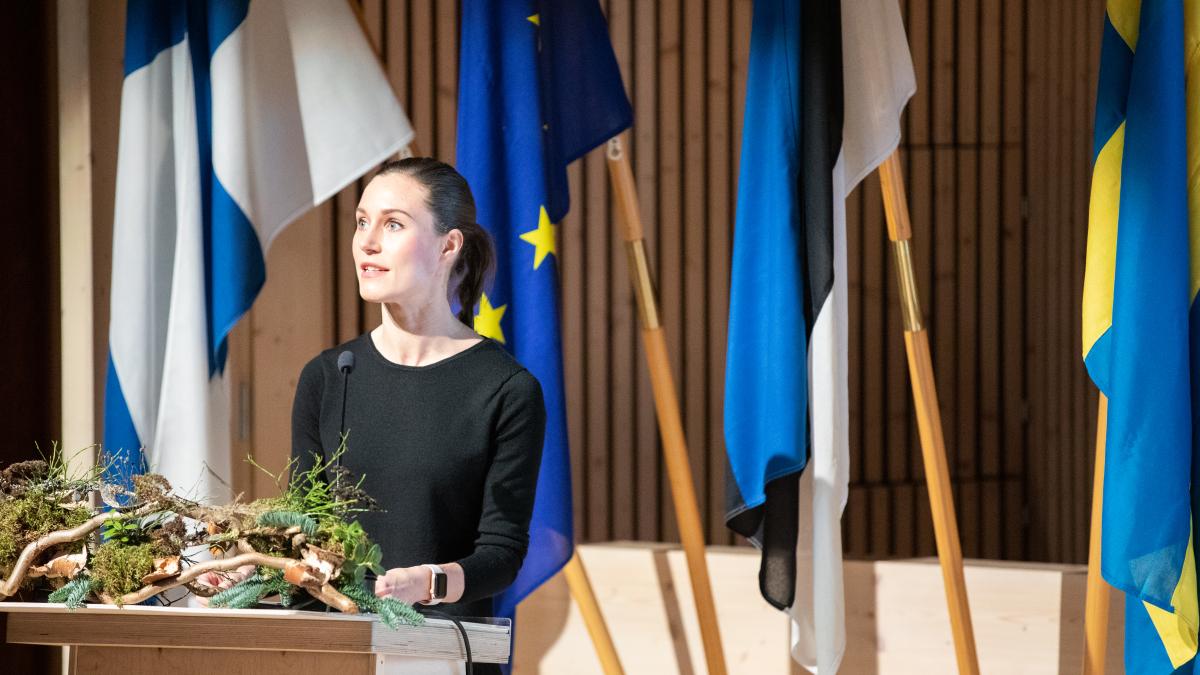Speech of Prime Minister Sanna Marin at the New European Bauhaus Goes Into the Woods event on 24 November 2022

Prime Minister of Finland Sanna Marin spoke at the New European Bauhaus Goes Into the Woods event in Espoo, Finland, on 24 November 2022. Check against delivery.
President of the Commission, dear Ursula,
Prime Minister Kallas, dear Kaja,
Deputy Prime Minister Ebba Busch,
Dear participants,
You are most welcome Into the Woods, to the Finnish Nature Centre Haltia and to this conference.
Today is all about focusing our minds on forests, wood-based materials and sustainability.
The built environment is in a key position in our work to achieve carbon neutrality. It generates one third of all emissions, both in Finland and globally. According to the IPCC, we should cut these emissions by 80 per cent by 2050. This is a big challenge.
However, there are several ways to reduce emissions from the built environment. We have already taken many steps when it comes to energy efficiency. Next, we need to take steps towards material efficiency.
On our current path the production of cement, steel, aluminium and plastics is set to generate almost twice the amount of emissions we can allow by 2050 if we want to limit global warming to 1.5 degrees. That is why we must also find alternatives to emission-intensive materials in the construction sector.
As we all know, wood and biobased materials can offer great opportunities for decarbonising our building stock. We need to move towards a green bioeconomy in all sectors, and construction is no exception.
That said, we must maintain a careful balance in our forests. We must not harvest too much. We must not sacrifice biodiversity. And we must take good care of forest ecosystems, so that these carbon sinks can continue to play their vital role in our carbon neutrality goals.
Finland is aiming for carbon neutrality by 2035. To ensure this, we have invited different sectors in our society to develop their own roadmaps towards these goals. We expect every sector to bring its solutions and commitments to this joint effort.
In our Government, we have also turned attention to the climate impact of the built environment. We have sped up the development of policy on climate declarations for buildings. If we want to steer the climate impacts of the built environment, we first need to know what they are. We cannot manage something we cannot measure.
Wood construction plays an essential role in decarbonising our construction sector. The Government has a wood construction programme that supports the construction sector in finding new ways of building with wood. This programme has done remarkable work to promote low carbon solutions and strengthen international collaboration in the field.
Buildings are also important for the economy and our wellbeing. Around 80 per cent of our national wealth is in the built environment, and we spend over 90 per cent of our time indoors. We must solve the environmental challenges of construction, while maintaining its role in the economy and ensuring healthy and comfortable conditions in buildings.
We also have to balance different aims when regulating the use of forests. It is clear that forest policy as such belongs to the EU Member States. At the same time, the EU’s climate, environment and energy policies have a direct effect on forests and forestry.
When we set goals at the EU or global level that have an impact on forests, we should remember that forests and conditions are different in different parts of Europe. We should also bear in mind that 60 per cent of forests in Finland are owned by private citizens. Finland is committed to the goals we set together at the EU or global level, but it should be left to decision-makers at the national and local level to find and use the best possible methods for implementation.
Another key element related to the future use of forests is predictability. This is especially important when we discuss multiple proposals affecting the use of forests – a constant source of renewable material – at the same time. Forest owners and the forest industry plan and execute their investments over a timeframe of decades. As such, we must avoid constantly reviewing and changing the regulations that affect them. This would weaken Europe’s global position as a place for innovative industry that develops sustainable ways of production.
Complex problems require new solutions. We need creativity and innovation. We need to bring in the creative potential of architecture and design. And we need cross-disciplinary collaboration and new skills.
In this context, another issue we should pay attention to is the impact of climate change and environmental challenges on our wellbeing. Young people in particular are legitimately concerned about the state of our planet. We know that levels of environmental anxiety and depression are increasing. We need to act on these challenges.
Arts and culture can offer channels for addressing this. Spending time in the forest can inspire design and architecture, but it also promotes mental and physical wellbeing. Sustainable architecture can help us develop better solutions for the global crises we are facing. All of this is embodied in the New European Bauhaus initiative, which Finland is actively participating in with our Nordic neighbours. Today’s event is a prime example of this collaboration.
I want to thank you, dear Ursula, for this initiative, and I’m glad to announce our participation with the development of digital learning materials for wood construction.
Today we will discuss the role of forests, construction and architecture from the viewpoint of building a carbon-neutral Europe. I encourage you to take a visionary view and imagine the solutions for tomorrow. I am convinced that together we can make them a reality.

